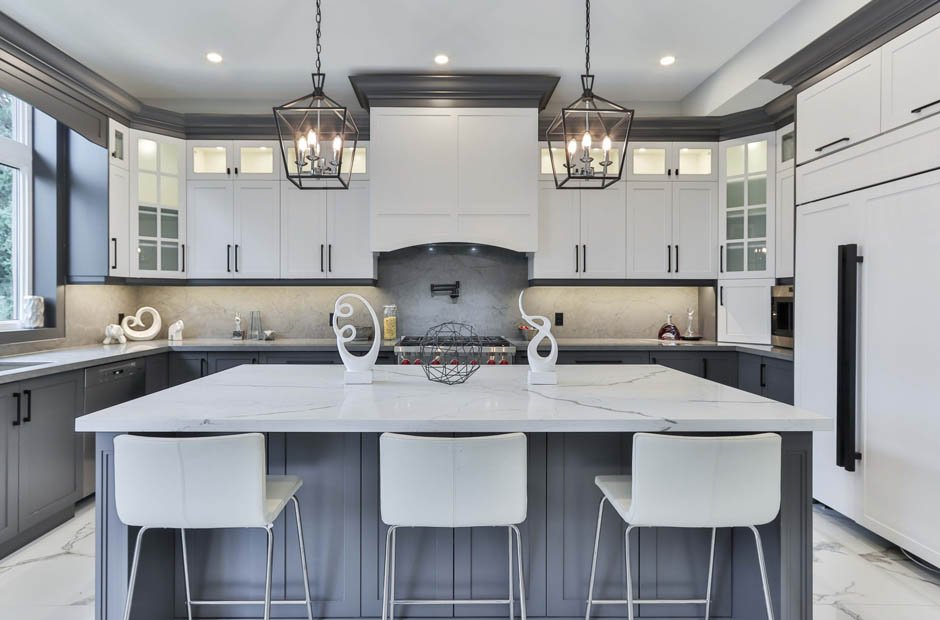Remodeling your kitchen, according to Peak Residential Management in Auburn, is an exciting and transformative project that can breathe new life into one of the most vital spaces in your home. A well-executed kitchen remodel can enhance functionality, improve aesthetics, and even increase the overall value of your property. However, tackling such a project requires meticulous planning, attention to detail, and a clear understanding of the essential steps. We will explore the critical steps to ensure a successful kitchen remodel, helping you confidently navigate the process and achieve the kitchen of your dreams.
Table of Contents
Steps to ensure a successful kitchen remodel
1. Set a Realistic Budget
The very first step in any successful kitchen remodel is setting a realistic budget. Your budget will serve as the foundation for all other decisions and will determine the scope of your project. Begin by assessing your financial situation and determining how much you can comfortably allocate to the remodel. Consider all potential costs, including materials, labor, appliances, fixtures, and any unforeseen expenses during the renovation. By establishing a clear budget from the outset, you can make informed choices throughout the project, ensuring you stay on track financially.
2. Define Your Kitchen Remodel Goals
Before diving into the specifics of your remodel, it’s essential to define your goals and priorities. What are you hoping to achieve with your kitchen renovation? Are you looking to create a more functional layout, update the look and feel, improve energy efficiency, or increase storage space? Identifying your goals will guide your decision-making and help you prioritize what matters most. Understanding your objectives will also assist you in allocating your budget effectively. For instance, if maximizing storage space is a top priority, you can allocate a larger portion of your budget to custom cabinetry and innovative storage solutions.
3. Plan the Kitchen Layout
The layout of your kitchen is a fundamental aspect of its functionality and flow. Evaluate your current kitchen layout and consider whether it meets your needs or if there are opportunities for improvement. Think about the placement of appliances, counters, cabinets, and the overall workflow within the space. While retaining the existing layout may save costs, it may not always be the most efficient or aesthetically pleasing option. Consider consulting with a professional kitchen designer or contractor to help you reconfigure the layout if necessary. A well-thought-out layout can significantly enhance the overall usability and convenience of your kitchen.
4. Select Quality Appliances
The selection of kitchen appliances is a significant investment and a critical decision for your remodel. Your choices should be guided by your cooking habits, lifestyle, and budget. Take into account factors such as appliance size, energy efficiency, and functionality when making selections. Investing in high-quality, energy-efficient appliances can usher in long-term savings on your utility bills and reduce your environmental footprint. Additionally, ensure that your chosen appliances seamlessly fit within your kitchen layout and complement the overall design.
5. Choose Cabinetry and Countertops
Cabinetry and countertops are two major components that significantly impact the aesthetics and functionality of your kitchen. When determining cabinetry, contemplate factors such as style, material, finish, and storage options. Custom cabinets offer the advantage of tailored storage solutions, maximizing the use of available space. For countertops, you can choose from various materials, including granite, quartz, marble, and laminate. Each material has its unique characteristics in terms of durability, maintenance, and aesthetics. Choose a countertop material that suits your style preferences and aligns with your budget.
6. Plan Lighting and Electrical
Proper lighting is crucial in a kitchen for both functionality and ambiance. Plan the placement of lighting fixtures carefully to ensure even and effective illumination throughout the space. Consider a combination of task lighting, ambient lighting, and accent lighting to create a well-lit and inviting kitchen environment. Additionally, assess your electrical needs, including outlets and switches. Plan for the installation of additional outlets in convenient locations for small appliances and charging devices. If your kitchen remodel involves significant electrical work, consult with a licensed electrician to ensure compliance with local building codes and safety standards.
7. Pick the Right Backsplash
A well-chosen backsplash can be a focal point in your kitchen’s design. Backsplashes serve to protect your walls from spills and stains while adding a decorative element to the space. When selecting a backsplash material and design, consider how it complements your countertops, cabinetry, and overall color scheme. Popular backsplash options include subway tiles, mosaic tiles, glass tiles, and natural stone. Your choice should reflect your personal style and enhance the overall aesthetics of your kitchen.
A successful kitchen remodel requires thorough planning, thoughtful decision-making, and attention to detail. By following these essential steps with kitchen remodeling contractors in Los Angeles, from establishing a realistic budget and defining your goals to selecting quality materials and hiring professionals, you can create the kitchen you’ve always dreamed of—functional, aesthetically pleasing, and tailor-made to suit your lifestyle.










